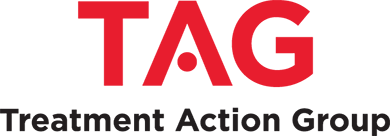USAID supports the adoption, implementation and roll-out of all WHO approved TB treatment regimens. In USAID’s 24 priority TB countries, we intend to provide National TB programs (NTPs) requesting to implement these regimens access to country specific technical assistance. Other USAID Global Fund TA countries may be also eligible for targeted support. In addition, USAID plans to support country level stakeholders to advocate for and support implementation of the key components needed for the successful implementation of the technical areas of this campaign. Please note that any USAID support and technical assistance is subject to availability of funds and to completion of applicable requirements and processes. To request assistance, please download and fill out the following form. The areas below are illustrative examples of USAID support:
A. Policy Development/Revisions
In priority countries requesting support, USAID may help develop and/or revise national policies and guidelines to be consistent with the global WHO recommendations. The support may include activities such as organizing the policy committee, providing short-term consultancies on the development of the guidelines, presentation of data to support the guidelines, and the dissemination and training on the guidelines.
B. Support coordination and development of country specific implementation plans
USAID may build on the existing TB coordinating mechanisms to develop a roadmap for implementing the WHO guidelines with clear timelines and geographical priorities. In the case of DR TB, the support may be provided to the DR TB committee’s action to develop an implementation approach for BPaLM. The coordination mechanism aims to bring together all country specific stakeholders, donors, and community members.
C. Community and Local Organization Capacity Development
USAID may support community and local organizations to advocate for the adoption of these new regimens as well as implementation of them. In particular, capacity building may be provided for these organizations to play an active role in educating their communities on the regimens and supporting individuals in the successful completion of the regimens to ensure a patient-centered, community-linked, and integrated approach at the primary care level.
D. Health Care Workers Capacity Development
USAID may develop and/or adapt training curricula, organize a training plan for all relevant professional staff and ancillary personnel including training of trainers sessions and community expert groups. USAID may build on TB Alliance’s experience with the BPaL regimen and support the development of clinical training materials, including prevention, detection, and management of adverse events. USAID may develop communication materials for health care workers, patients, and communities to reflect the need for patients to be aware of the risks and benefits of each treatment regimen.
E. Procurement and Supply chain management
Through support to the Stop TB Partnership Global Drug Facility and in-country partners, USAID may support the implementation of the new regimens procurement and supply chain management technical assistance including forecasting, quantification, and distribution assistance.
F. Monitoring and Evaluation including aDSM
USAID maywork with countries to include specific 1X4X6 indicators and measurements as part of the standardized reporting and M&E systems, including training of a variety of different stakeholders on the tools. Support may also include the development of and/or implementation of routine recording and reporting of AEs/SAE for patient’s safety data and PV/aDSM reporting algorithm/information flow. This may also include the support for collecting more data and evidence to improve the implementation approach in each country.
USAID intends to work closely with NTP staff, implementing partners and local organizations to fill critical needs in technical assistance to implement components of the 1X4X6 Campaign to continue the Agency’s TB strategy goal to reach every person with tuberculosis, cure those in need of treatment, and prevent new infections and progression to active TB disease.
